The centenary of Mr. Su Bai’s birth: a society must have people devoted to learning
Mr. Su Bai (August 3, 1922 ~ February 1, 2018) was the founder of the archaeological discipline system in China, the pioneer of Buddhist archaeology in China and archaeological education in New China, and made outstanding academic contributions in the fields of archaeology, urban archaeology, tomb archaeology, religious archaeology, architectural archaeology, printing archaeology and edition science in China. In 2016, he won the Lifetime Achievement Award of the first China Archaeological Society.
August 3rd, 2022 is the 100th birthday of Mr. Su Bai. The Paper learned that the "Symposium on the Construction of Yungang Studies and the 100th Anniversary of Mr. Su Bai’s Birth" was held in Datong City, Shanxi Province from August 3rd to August 5th. The conference will focus on three aspects: the construction of Yungang studies, Buddhist archaeology and Mr. Su Bai’s academic achievements and research.
"Mr. Su Bai, on his own, has expanded many fields of archaeology in the historical period, including cities, tombs, handicrafts, religious remains, ancient architecture, Chinese-foreign exchanges and edition catalogues, etc. Mr. has created or expanded, and his later studies have been able to follow the path. This is a comprehensive and objective evaluation of Mr. Su Bai’s scholarship. Mr. Su Bai’s life was accompanied by the occurrence and development of archaeology in China. He explored a set of research methods of historical archaeology rooted in China’s traditional historiography from a large number of case studies, which laid the basic research paradigm and academic character of historical archaeology. Reviewing Mr. Su Bai’s academic methods is not only a memory of the deceased, but also a need for discipline development. " Li Meitian, a professor and doctoral supervisor at the School of History of Renmin University of China, said.

Mr. Su Bai (August 3, 1922-February 1, 2018)
On August 3rd, under the guidance of Shanxi Provincial Cultural Relics Bureau, Datong Municipal Committee of the Communist Party of China and Datong Municipal People’s Government, Yungang Research Institute, Peking University Institute of Archaeology and Culture, and China Archaeological and Religious Archaeological Committee jointly sponsored the "Academic Seminar on Yungang Studies Construction and the 100th Anniversary of Mr. Su Bai’s Birth" held in Datong.
The seminar is divided into two parts. In the first half, presided over by Sun Hua, Anjiayao, Yang Hong and Li Yuqun gave speeches entitled Mr. Su Bai and Urban Archaeology, Mr. Su Jigeng and I, and From Yecheng to Jinyang-Restoration of a Stolen Beiqi Grottoes on Guhuguan Road. The second half was presided over by Li Yuqun, and Li Chongfeng, Wei Zhengzhong and Zhang Qingjie gave speeches entitled Mr. Su Bai and Buddhist Archaeology, Rethinking about the Central Pillar Cave, and Investigation of the gatekeeper of Yungang Grottoes.
Mr. Su Bai (August 3, 1922-February 1, 2018) was born in Shenyang, Liaoning Province. He graduated from the Department of History of Peking University, then worked in the Archaeological Teaching and Research Section of Peking University Institute of Arts and Sciences, and worked as a cataloger in Peking University Library. Since 1947, he has been a postgraduate in archaeology at the Institute of Arts and Sciences. In 1952, he served as the deputy director of the Archaeological Teaching and Research Department of Peking University History Department, and was one of the main founders of archaeology in Peking University. In 1978, he was a professor in the history department of Peking University, and in 1981, he was the first batch of doctoral supervisors. In 1982, he helped Mr. Deng Guangming to set up the Peking University Medieval History Research Center, which was one of the main founders. In 1983, the Department of Archaeology of Peking University was established as the head of the department; In the same year, he was hired as a visiting professor at UCLA. In 1979, the Archaeological Society of China was founded, and Mr. Su Bai successively served as the executive director, vice chairman, chairman and honorary chairman of the Archaeological Society of China.
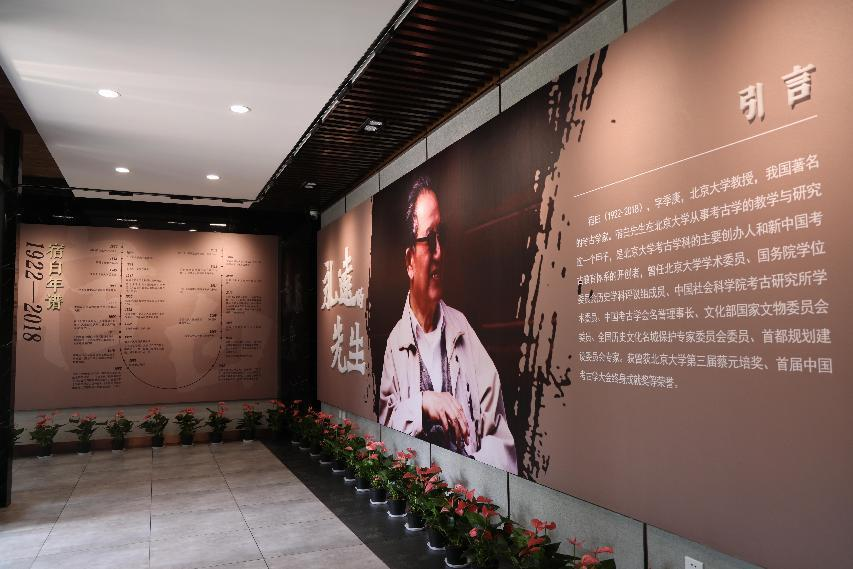
Mr. Su Bai Memorial Exhibition Site
At the same time, the memorial exhibition of Mr. Su Bai shows Mr. Su Bai’s great contribution to the development of archaeology in China with a large number of manuscripts, relics and photos. Through the modules of "I’m just a teacher", "Do my duty as a scholar" and "Yungang Love", Mr. Su Bai’s life-long teaching, scientific research and ways of being a man are fully displayed. At the same time, the exhibition hall reflects Mr. Su Bai’s relationship with Yungang Studies and Mr. Su Bai’s Yungang feelings. Mr. Su Bai cared about the archaeological research and protection of Yungang Grottoes all his life, took students to inspect Yungang Grottoes many times, and still cared about Yungang’s academic career until his later years. He was the actual founder of Yungang studies, laid a solid foundation for the research and development of Yungang studies, and determined the important position of Yungang Grottoes in the study of China grottoes.
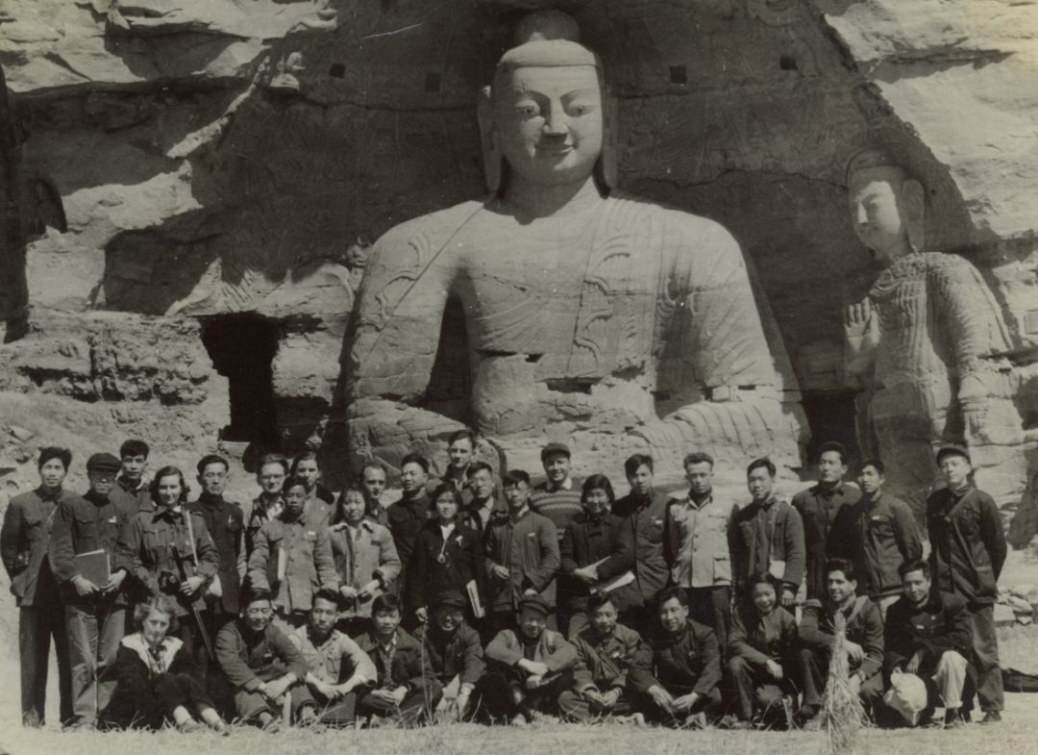
In 1955, Mr. Su Bai (fifth from the left in the front row) and the class of 1952 students majoring in archaeology of Peking University History Department practiced in Yungang.

On March 15th, 2022, Mr. Su Bai settled in Yungang.
On March 15th, 2021, Mr Su Bai’s ashes were buried in Yungang Grottoes. Mr. Su Bai cared about the archaeological research and protection of Yungang Grottoes all his life, and he still cared about Yungang’s academic career until his later years. He was the founder of Yungang studies, which laid a solid foundation for the research and development of Yungang studies and confirmed the important position of Yungang Grottoes in the study of China grottoes.

When Mr. Su Bai was studying in Peking University in 1943,
With outstanding academic achievements, Mr. Su Bai is the founder of the archaeological discipline system in China, the pioneer of Buddhist archaeology in China and archaeological education in New China, and has made outstanding academic contributions in the fields of archaeology, urban archaeology, tomb archaeology, religious archaeology, architectural archaeology, printing archaeology and edition science in China. In 2016, he won the Lifetime Achievement Award of the first China Archaeological Society.
Mr. Su Bai is concerned about the protection of cultural relics and historical sites, and has been personally involved in the investigation and archaeological excavation of cultural relics all the year round. He has accumulated a large number of first-hand materials of cultural relics, images and mapping, which has laid a solid foundation for finding out the family background of cultural relics and further protecting and repairing cultural relics and historical sites. In addition, based on the research perspectives of urban archaeology, architectural archaeology and cave temple archaeology, Mr. Su Bai’s academic achievements have also played an important role in the protection of historical and cultural cities, ancient buildings and cave temples.

Mr. Su Bai worked in Xuchang before he went to excavate the tomb of Baisha Song. Source: Peking University Institute of Archaeology and Culture (pku.edu.cn)
It is reported that Mr. Su Bai has always adhered to the front line of teaching and devoted his life to the cultivation of talents in China’s cultural relics and archaeology. He is the main founder of Peking University’s archaeological discipline. In the 1950s, he directed the teaching of several training courses for archaeologists, and many cultural relics and archaeologists in New China were taught in Yu Xiansheng. Mr. Su Bai was also a visiting professor at UCLA, teaching Buddhist archaeology in China, which had a far-reaching international influence. In his later years, Mr. Su Bai published his life narrative series as six unpublished lecture series of Su Bai, which provided a model for archaeological teaching. In 2013, she won the Peking University Cai Yuanpei Award, which is the highest honor for teachers in Peking University.

Photo taken at the opening ceremony of the first training course for archaeological staff in 1952. Source: Peking University Institute of Archaeology and Culture (pku.edu.cn)
From 2017 to 2021, the Life, Reading and New Knowledge Joint Bookstore integrated and reprinted Mr. Su’s previous works, and launched "Su Bai Collection" (six kinds). The purpose is to introduce these specialized studies to a wider range of humanities and intellectual circles. They not only have the significance of setting an example in the professional field, but also show their comprehensive grasp of historical issues and Chinese civilization. Since August 1st, the Sanlian Academic Newsletter has pushed five issues one after another, showing Mr. Su’s pioneering and foundation-laying academic career from five aspects: the founder of archaeology in historical period, the pioneer of Buddhist relic archaeology, the encyclopedic scholar who reproduces history with archaeology, and the eternal teacher in archaeological and cultural circles. In order to introduce this great archaeologist to more readers, The Paper specially selected and published the contents.
The founder of archaeology in historical period
Su Bai is the pioneer, founder and master of archaeology in the historical period of China. He not only has his own specialty in cave temples, Buddhist architecture and edition catalogue, but also has been teaching and taking charge of the work in the department since the establishment of the archaeology major of the History Department of Peking University (1952), which has laid the overall pattern and methods of archaeology in the later period and enjoyed a leading position in the professional field.
"Big waves wash sand, don’t look at the present. After a decade or two, who can sink their hearts, then look at these people. A society must have someone to concentrate on learning." Mr Su Bai once said.
Rong Xinjiang, a professor and doctoral supervisor of Peking University History Department, is deeply impressed by Mr. Su’s skill in literature, including his familiarity with editions and stone carving documents.
The best example of Mr. Su’s use of documentary materials to promote archaeological research is the familiar "Rebuilding the Stone Cave Temple Monument on Wuzhou Mountain in Dajin Xijing" written by Cao Yan in the seventh year of Jin Dynasty (1147), which reconstructed the chronological system and later construction history of Yungang Grottoes. "When I read Mr. Su’s related words, the biggest feeling is that the original stone of the Golden Monument has already been destroyed, and even the rubbings don’t exist. However, in the last years of the Yuan Dynasty, when Xiong Zi wrote Analysis of Tianjin, he recorded the inscription on this side. Analysis of Tianjin Records was not published, but when Yongle Dadian was compiled in the early Ming Dynasty, the characters of Analysis of Tianjin Records were copied in different rhymes. By the 12th-14th year of Guangxu reign in Qing Dynasty (1886-1888), Miao Quansun had borrowed from imperial academy the Tian Zi Yun of Yongle Dadian and collected eight volumes of Analysis of Jin Zhi, among which Jinbei was one. Later, the relevant part of Yongle Dadian was destroyed by Gengzi (1900) in Eight-Nation Alliance. Only Miao Quansun’s copy was preserved and entered the library of Peking University through Li Shengduo, and its value was discovered by Mr. Su. Only this lost text, copied and hidden documents, has made people dizzy, not to mention finding that what is recorded in it was originally an important text about Yungang Grottoes in Datong, Shanxi Province, and this text is the historical data of Yungang Grottoes construction that Japanese scholars who have been doing Yungang archaeology for decades have never known. This does not have a certain literary skill, so how can you know each other? " Rong Xinjiang wrote in the article "Compilation of archaeological documents that shake the earth-in memory of Mr. Su Bai".

Mr. Su Bai’s Notes on the Revision of the Annotation of the Golden Monument

Mr. Su Bai’s Notes on the Revision of the Annotation of the Golden Monument
The same example also includes the research on the monument of Li Jun’s Mogao Grottoes, which was originally located on the south side of the front room of Cave 332 in Dunhuang, and the research on the monument of Chang ‘an Map carved by Lv Dafang in the Northern Song Dynasty.
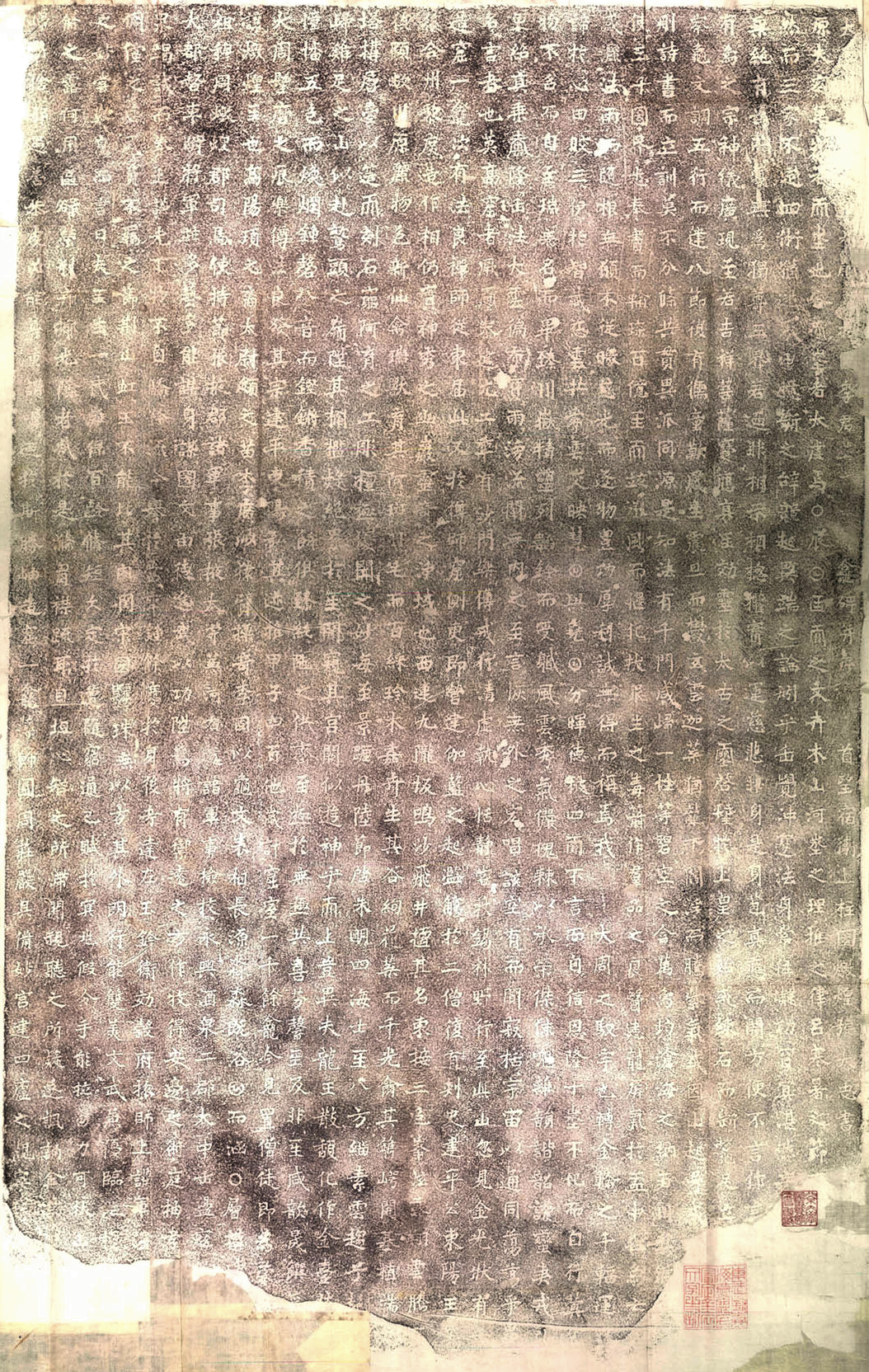
Li Jun Mogao Grottoes Buddhist Shrine Monument
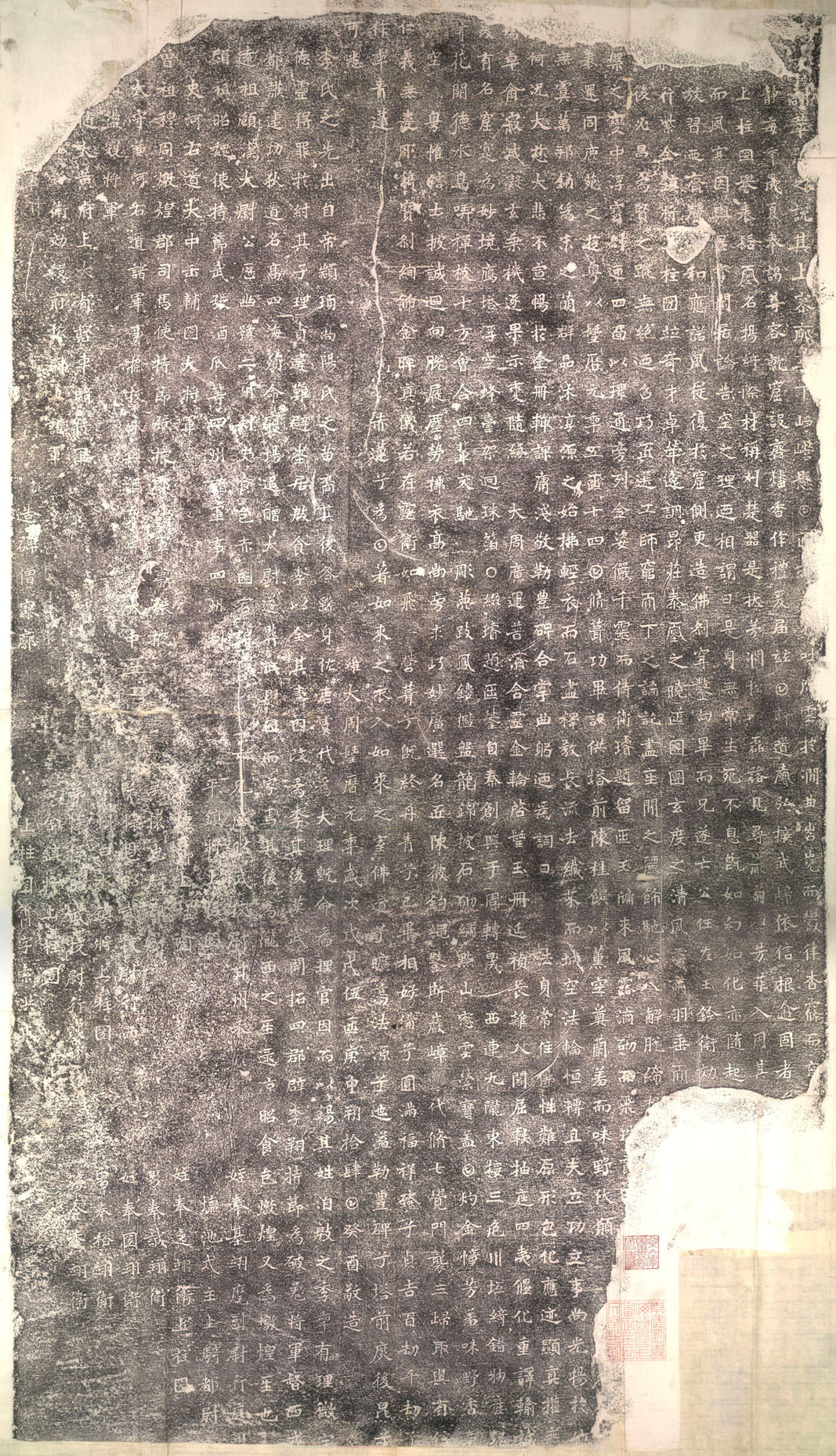
Li Jun Mogao Grottoes Buddhist Shrine Monument
Mr. Su’s familiarity with the treasures of Peking University Library is not limited to documents and stone carvings, but also a small number of Dunhuang and Turpan documents. In the archaeological textbooks published internally, he once mentioned the North Cool Book in Peking University Library, which attracted Mr. Zhu Lei’s attention. With the help of Mr. Su, Zhu Lei got the original in the library of Peking University and wrote Textual Research on the Northern Liangru Book Unearthed in Turpan (Journal of Wuhan University, No.4, 1980). Combining with the same set of documents collected in the library of the Academy of Sciences, he verified that it was the Filial Filial Piety Book in Duxiang, Gaochang County, Beiliang County, which greatly promoted the study of the farmland servitude system in the Sixteen Countries Period, and also contributed to Turpan later. This achievement, which is of great significance to the study of Dunhuang and Turpan, should also be said to be given by Mr. Bai Su.
The pioneer of Buddhist relic archaeology
Mr. Su’s contact with Buddhist archaeology in China is mainly due to his working relationship. In the early 1950s, large-scale construction projects in various places had not yet started, and archaeological work focused on investigating the present situation of cultural relics on the ground. Su Bai participated in several important surveys organized by the Cultural Relics Bureau of the Ministry of Culture: the survey in Yanbei in 1950, the survey in western Liaoning in Northeast China and the survey in Dunhuang Mogao Grottoes in 1951. "In these investigations, Buddhist relics were the main targets, so I became interested in this work and accumulated some first-hand information." Su Bai once recalled.
In 1952, the Institute of Arts of Peking University, the Cultural Relics Bureau and the Institute of Archaeology of China Academy of Sciences jointly organized a training course for archaeological staff and the Department of History of Peking University set up an archaeology major. In order to offer the course of archaeology in China, Su Bai was assigned to teach archaeology in the post-Han period. Religious relics are an indispensable part of this period of archaeology, and Buddhist relics are an important part of religious relics, so the assigned work is combined with Mr. Wang’s personal interests.

Cave 20 of Tanyao Cave 5 in Yungang Grottoes
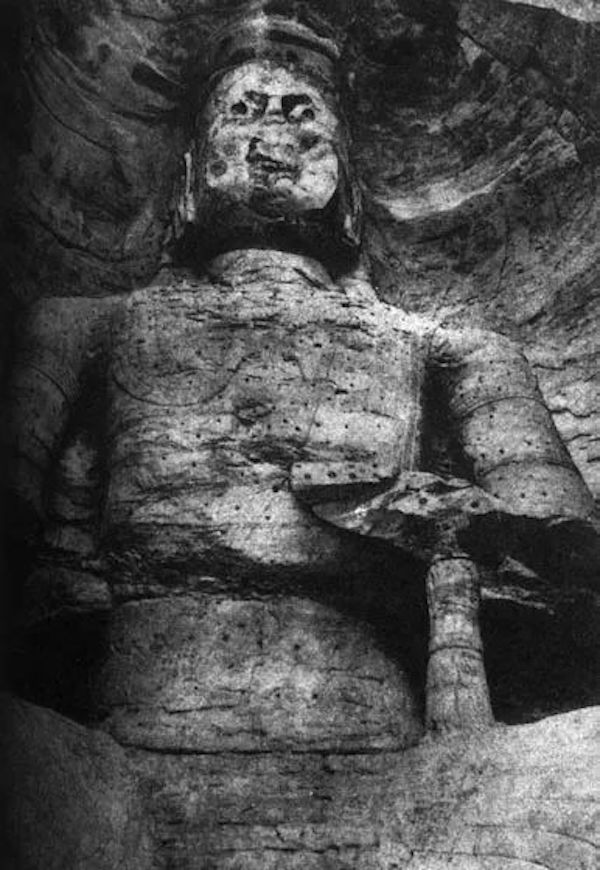
Yungang Grottoes, Cave 17, Cave 5, Tanyao, is a Bodhisattva who crosses the foot in the middle.

Yungang Grottoes, Cave 19, Tanyao Cave 5, a small niche in the west, Sakyamuni Duobao sits in a statue niche.
Su Bai introduced in the article "I and China Buddhist Archaeology" that Buddhist relics can be divided into temple relics and cave temple relics according to different architectural structures; Divided by region and faction, it is mainly the remains of Han Buddhism and Tibetan Buddhism. Before the "Cultural Revolution", I focused on the remains of temples in Han Dynasty. After the "Cultural Revolution", the focus was gradually expanded to include both cave temples and Tibetan Buddhist relics, which led to the idea that a more comprehensive and systematic Buddhist archaeology in China should be considered.
In addition to the remains of monasteries and cave temples, Buddhist archaeology should also include all kinds of Buddhist relics, such as statues, statues, instruments and related scrolls and documents found in various places. Some of these relics can no longer be attached to a relic, and some have been disturbed and mixed for a long time although they know where they belong. The former is like a product handed down from the early years, and the latter is like the discovery of grottoes in the northwest since this century, among which the discovery of the Buddhist scriptures in Dunhuang Mogao Grottoes in 1900 is the most important. Various relics, mainly scriptures, have been found in the Tibetan Sutra Cave. From the perspective of Buddhist archaeology in Dunhuang, I’m afraid their importance is no less than the study of ancient documents, because these relics are also the basic materials to understand the contents of the caves in Mogao Grottoes and the history of Dunhuang area since the Southern and Northern Dynasties, including the history of Buddhism.
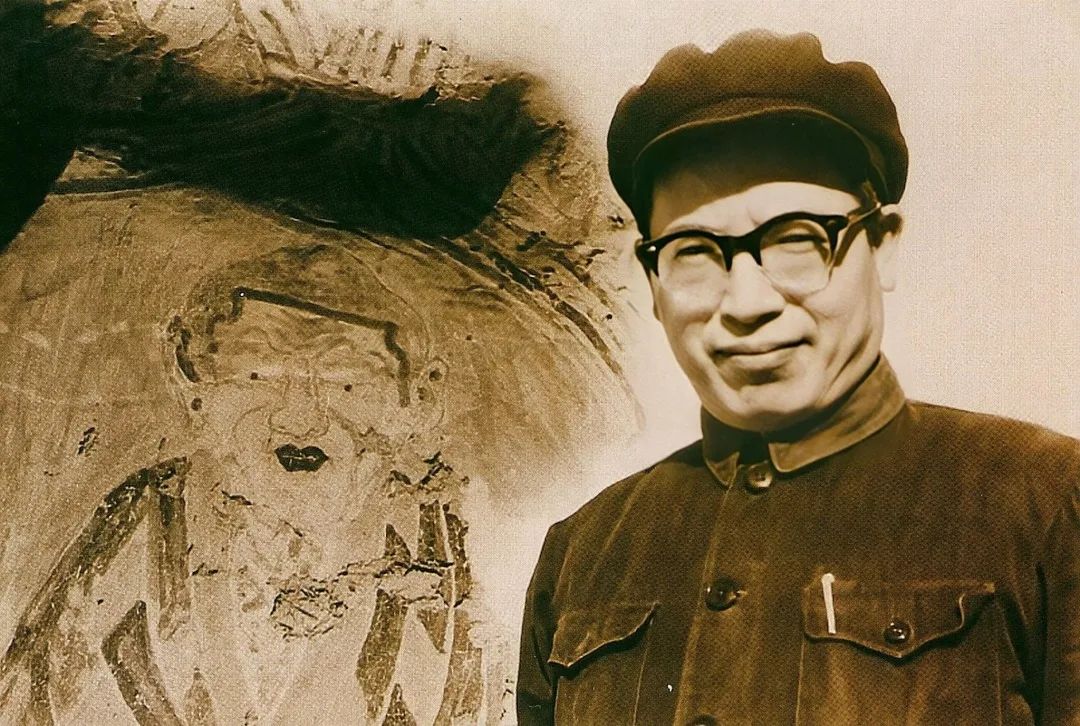
Mr. Su Bai in Dunhuang Mogao Grottoes (1962)
Archaeology of cave temples is one of the historical archaeological problems that Mr. Su Bai has been thinking about for a long time. Su Bai spent a lot of time to study and promote the archaeological investigation and research of China Cave Temple. Mr. Su Bai thinks that the archaeology of cave temples should first discuss the chronology, stages and nature, and then further discuss its social nature. Therefore, it is the most important link to pay attention to the shape, layout, grouping and image of caves, and to investigate and record the combination of various themes and the characteristics of sculptures. The basis of archaeology is stratigraphy and typology, and the archaeological records of cave temples are equivalent to stratigraphy of archaeology. The archaeological records of cave temples are not general investigation records, but the highest standard it should achieve is that after the archaeological objects are destroyed, they can be restored according to the investigation records. This is especially important for the grotto remains, because the life of the grotto can’t last forever, it will disappear bit by bit and eventually be completely destroyed. The destruction of Bamiyan Grottoes in Afghanistan fully highlights the importance of detailed archaeological investigation.

In 2004, Mr Su Bai (right) was in Longmen Grottoes.
"In a series of pioneering work carried out by Mr. Su Bai, almost every book of his marks a new starting point of Buddhist archaeology, from which we can learn a lot, such as the angle of asking questions, the methods of solving problems and reliable and unnoticed materials and information. He will easily grasp the essence of the problem and discuss it, and the debate with Chang Guangmin Xiong fully highlights his talent. Today, decades later, these works are still classic works in the academic field, such as Research on China Cave Temple, Archaeology of Tibetan Buddhist Temple and even the famous Seven Lectures on Dunhuang. " Luo Feng, School of Cultural Heritage of Northwest University, and Li Zhirong, School of Art and Archaeology of Zhejiang University, commented in the article "Archaeological Investigation of Cave Temples in Su Bai and China" that "Mr. Su Bai’s thoughts on archaeological investigation of grottoes are comprehensive, and the methods are specific and detailed. Even in the past 50 years, due to technological progress, some too difficult measurements have become relatively simple. However, the specific operation methods and concerns required by Mr. Su Bai still have practical guiding significance, or we still have not reached the level required by Mr. Su. "
Reproduce history by archaeology: city sites, tombs and cultural heritage
Mr. Su Bai loved history and culture all his life, and he was still very concerned about the living conditions of cultural heritage in his later years. In the summer of 2009, Dan Jixiang, then director of National Cultural Heritage Administration, received a sincere letter from Mr. Su Bai, in which he wrote, "I was deeply saddened to hear that the ancient hydropower station in Yunnan will be built and will completely flood the salt field of Mangkang Salt Well in Xizang!" Mr. Su Bai appealed: "In view of the importance of Mangkang Yanjing Yantian in southwest China in history, culture, cultural relics, landscape, nature, nationality, religion and other aspects, as well as its huge potential heritage and cultural relics value, especially as an existing living history, it is extremely rare in the world today. Therefore, in any case, we should protect this precious heritage of the Chinese nation responsibly. "

The ancient salt field of Mangkang Salt Well in Xizang, located on the east and west banks of Lancang River, is the only place in China that keeps the original way of drying salt by hand. In the past, Mangkang Salt Well was the main channel for political, economic and cultural exchanges between Tibet and China, and it was also one of the important post stations of the ancient tea-horse road.
With Mr. Su Bai’s great trust, Dan Jixiang immediately embarked on a trip to investigate the protection status of the salt field in Mangkang Salt Well, Xizang. Mangkang, Xizang, is located in the Lancang River Basin, with mountains on both sides trending north and south, and a canyon landform dominated by high mountains and deep valleys is formed in the region.
"During the inspection, we have a certain understanding of the rich local culture and natural landscape, the diversity of local ethnic composition, religious beliefs and cultural features, and the historical and cultural changes in Yanjing area for thousands of years. In particular, although Mangkang Yanjing Yantian has a long history of thousands of years, it is still inherited by local Tibetans and Naxi people and is a typical living cultural heritage. " Dan Jixiang wrote in the article "Mr. Su’s Appeal Saved the Unique Mangkang Yanjing Yantian", "At the cultural heritage site, we held a symposium on the protection of Mangkang Yanjing Yantian, and put forward requirements for the protection of Yanjing Yantian site and heritage environment."
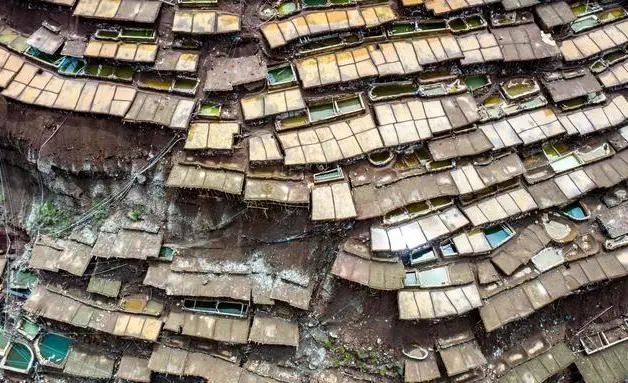
Aerial photo of ancient Yantian in Xizang Mangkang Yanjing (partial)
Back in Beij, National Cultural Heritage Administration immediately wrote to that Yunnan provincial government and the Xizang Autonomous Region municipal government, explicitly demanding that the implementation of the reservoir construction scheme be stop, and that the precious cultural heritage of Mangkang Yanjing Yantian must not be destroyed due to the reservoir construction, and at the same time, Mangkang Yanjing Yantian should be included in the cultural relics protection unit. After some efforts, we got replies from Yunnan and Xizang, and promised to stop reservoir construction, implement overall protection for the salt field of Mangkang Salt Well, and declare it to the national key cultural relics protection units.
(This article is compiled from Yungang Grottoes, Sanlian Academic Newsletter, Qingyuan Cultural Heritage, Wenbo Shanxi and other related materials in WeChat official account. )